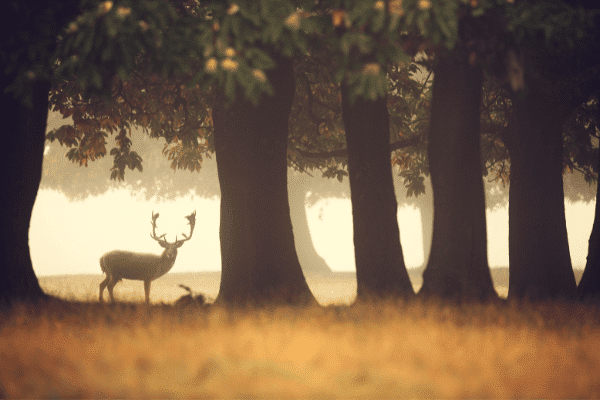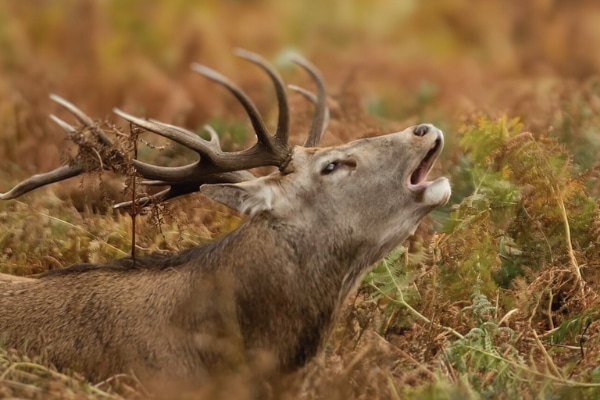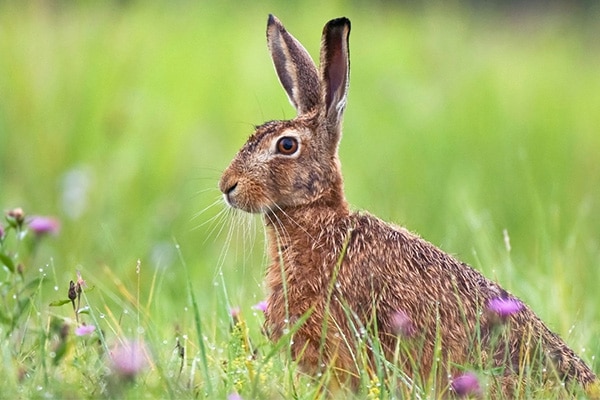
Scotland’s recreational deer stalkers left out in the cold
Scotland’s deer population is estimated to be in excess of one million, but many trained recreational deer stalkers in Scotland struggle to access deer management opportunities.
Get information on the legal shooting season for mammals and birds in the UK.
Learn about our current conservation projects and how you can get involved.
Comprehensive information and advice from our specialist firearms team.
Everything you need to know about shotgun, rifle and airgun ammunition.
Find our up-to-date information, advice and links to government resources.
Everything you need to know on firearms law and licensing.
All the latest news and advice on general licences and how they affect you.


BASC member Peter Eayrs recalls two memorable trips stalking red deer on the Isle of Arran BASC stalking scheme.
Anyone who has stalked red deer on the BASC Arran scheme will be happy to explain the difference between stalking wild red deer in the woodland mountains there and stalking red deer in a deer park. Arran is a challenge on many levels and this is what makes stalking deer there so rewarding. A special place, stunningly beautiful, I call Arran the Mystical Isle as it eats into your soul and keeps on calling you back. The bloodline of the red deer there is about as pure as it gets.
I have made several stalking trips to Arran, and the main thing I have learnt is that in this beautiful place, one should expect the unexpected! Here’s why…
About ten years back, during stag week one on the South End beat, we set up in a clearfell just before last light. The land fell away from us to a stream and then rose up to open ground and continued to rise steeply to the large wood that went over the top and down into the valley and then up to the next mountain. We waited, in fading light, in silence, for about 20 minutes for the sounds of the wood to normalise. I roared at the wood and received a reply – a very good sign! The stag and I were talking to each other, but I could hear that he was moving away deeper into the woods. Soon I could hear that he was over the mountain and at this stage, I was convinced stalking deer was over for that day.
After waiting for another ten minutes, I roared again. Immediately I could hear him coming down through the woods. What had happened is that he had moved his hinds over the hill into the woods and had come back spoiling for a fight. We waited. All of a sudden, there he was. He stepped out of the wood and stood with his chest pushed out. He gave a short roar, the sound of which seemed to resonate in my chest. I put the crosshairs of my .30-06 on his left shoulder, which was facing me, and hooked off. He took about two or three steps and collapsed. My stalking partner acknowledged that he was down. I heard the death bellow which reminded me of Africa and my tracker who would always say, in his African home tongue, “We eat meat tonight!”

Gutting a big deer at night by feel, with no light and on extremely steep ground, is not fun. Three times when pulling on the entrails, the carcass fell on top of me. I got the job done for extraction the following morning. Bob referred to it as “a nice staggy!” At the larder it weighed in at 131kg.
I wondered then, if I read on the Arran group chat, that someone had had to pull out of stalking during the stag week and anyone who wanted, and could make it to Arran in 72 hours, would be welcome to apply? Would I be tempted? Oh, yes! Expect the unexpected!
And so it came to pass. Last autumn, my friend informed me that he was unable to attend his stag week booked for early October. I agreed to take over his booking, accommodation, ferry booking and travel up to stalk deer…
Being one of the first to arrive for the Monday morning briefing, I decided to go up the mountain on Brodick Beat and take my time stalking deer quietly through the woods and then out onto the open ground that rises steeply up the mountain. Although it was clear, warm and sunny, I saw no deer. Coming back through the woods in the dark, I stopped my truck at an elevated position to use my thermal to see what was about. In front of me was an open clear fell, in the shape of an amphitheatre that fell away from me down to a large wood that then extended down the valley for miles. Right in front of me were five large heat sources. Five red deer about 160 yards away, including a very large one, probably a stag. I decided to return the next evening.
So, at 16:30 I found myself sitting on a tree stump on the edge of the clear fell, with the amphitheatre in front of me and the woods starting down the valley to my right. With the wind in my face, I expected the reds to appear from my right at the edge of the wood. Perfect backstop, except for the carpark/viewing point away back to my left. This is when you pray that no cars arrive with dog walkers.

Expect the unexpected! It was just about the last of the light when the stag arrived. He came walking down the quad track, right through the empty car park, his great head and antlers swaying rhythmically with each step. The stag was moaning with each step, it reminded me of an old African elephant walking down to a waterhole in the evening. They also walk heavily with their head swaying. I am a simple man and, like most Africans, believe that “if the Good Lord presents you with a good stag, it would be wrong not to take it.”
The stag was magnificent and I thought: “12-pointer with ivory tips.” I had to move the quad poles more than once to take the shot. Time was running out and he was not going to stop. If he reached the woods before I could take the shot, it would be game over. He suddenly decided to drop down off the quad track into the clear-fell. As he turned towards me, my crosshairs found the high shoulder shot. The .30-06 spoke and I heard the solid sound of the bullet strike.
He ran round in a circle of about 30 yards wide and stopped, shaking his head and neck. I decided to take a second shot. It knocked him down and did not get up. Later we found out that the second bullet was not necessary, but on Arran one wants to be absolutely sure.
I only realised how big this stag was when it had been picked up by the quad bike. A 14-pointer! Back at the larder, we winched it up to the maximum lift height. When the winch is raised to its maximum, if the head still touches the floor, the stag is declared a ‘toucher’. This was definitely a toucher. A proper Arran stag.
BASC currently has three deer stalking schemes in operation – Arran (Scotland), Baronscourt (Northern Ireland) and Hampshire.
The schemes have been developed to provide a variety of different stalking opportunities for members. For more information, click here.

Scotland’s deer population is estimated to be in excess of one million, but many trained recreational deer stalkers in Scotland struggle to access deer management opportunities.

The month-long consultation seeks views on recommendations to tackle the growing deer population in England.

Read Conor O’Gorman’s blog following the inclusion of plans for new animal welfare legislation in the Queen’s speech in parliament yesterday.
Sign up to our weekly newsletter and get all the latest updates straight to your inbox.
© 2023 British Association for Shooting and Conservation. Registered Office: Marford Mill, Rossett, Wrexham, LL12 0HL – Registered Society No: 28488R. BASC is a trading name of the British Association for Shooting and Conservation Limited which is authorised and regulated by the Financial Conduct Authority (FCA) under firm reference number 311937.
If you have any questions or complaints about your BASC membership insurance cover, please email us. More information about resolving complaints can be found on the FCA website or on the EU ODR platform.
This website uses cookies so that we can provide you with the best user experience possible. Cookie information is stored in your browser and performs functions such as recognising you when you return to our website and helping our team to understand which sections of the website you find most interesting and useful.
Strictly Necessary Cookie should be enabled at all times so that we can save your preferences for cookie settings.
If you disable this cookie, we will not be able to save your preferences. This means that every time you visit this website you will need to enable or disable cookies again.
This website uses Google Analytics to collect anonymous information such as the number of visitors to the site, and the most popular pages.
Keeping this cookie enabled helps us to improve our website.
Please enable Strictly Necessary Cookies first so that we can save your preferences!
More information about our Cookie Policy